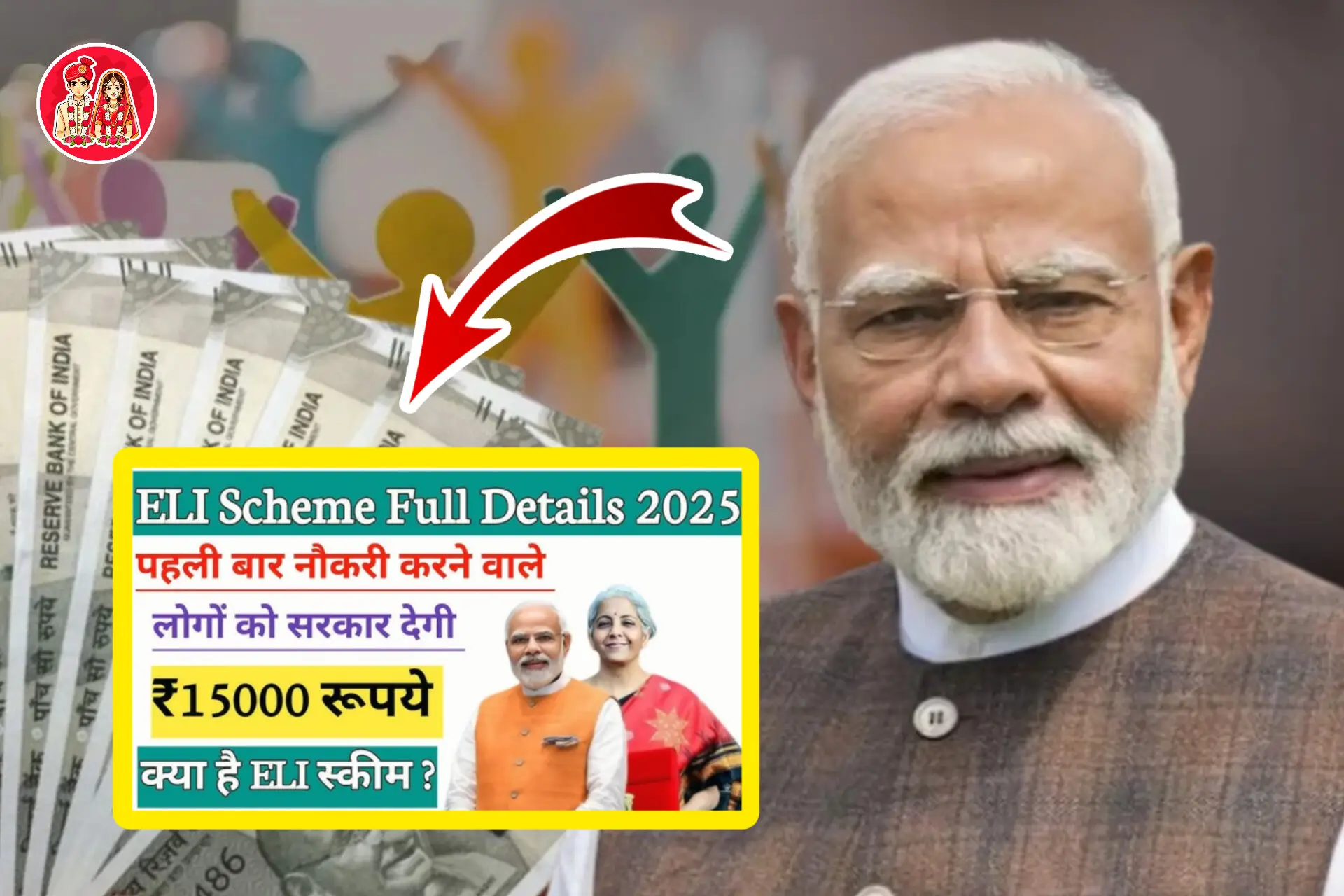ELI Schemes 2025: Full Details
The Employment Linked Incentive (ELI) Schemes 2025 are a set of government initiatives introduced in India’s Union Budget 2024-25 to address unemployment, promote job creation, and formalize the workforce, with a special focus on the manufacturing sector. These schemes are part of a ₹2 lakh crore package designed to facilitate employment, skilling, and other opportunities for 4.1 crore youth over five years. With a specific budget allocation of ₹99,446 crore, the ELI Schemes aim to create over 3.5 crore jobs within two years. They consist of three distinct schemes—Scheme A, Scheme B, and Scheme C—each targeting different aspects of employment generation and retention through financial incentives linked to hiring and formal employment.
Below are the full details of each scheme, their objectives, eligibility criteria, incentives, and broader impacts.
Scheme A: First-Time Employees
Objective
- To support individuals entering the formal workforce for the first time by providing a financial incentive.
Incentive
- Amount: One month’s salary, up to a maximum of ₹15,000, paid in three installments.
- Disbursement: Paid via Direct Benefit Transfer (DBT) using the Aadhaar Bridge Payment System (ABPS) in two main installments:
- After 6 months of employment.
- After 12 months of employment.
- Savings Component: A portion of the incentive must be kept in a savings instrument to encourage saving habits among new workers.
Eligibility
- Employees: First-time workers enrolled with the Employees’ Provident Fund Organisation (EPFO).
- Salary Cap: Employees earning up to ₹1 lakh per month.
Conditions
- Financial Literacy: Employees must complete a compulsory online financial literacy course before claiming the second installment.
- Documentation: Requires linking of Universal Account Number (UAN), Aadhaar, and bank account by June 30, 2025.
Expected Beneficiaries
- Approximately 1.92 crore first-time workers.
Scheme B: Job Creation in Manufacturing
Objective
- To encourage substantial hiring of first-time employees in the manufacturing sector, aligning with initiatives like “Make in India” and “Atmanirbhar Bharat.”
Incentive
- Financial Support: Incentives are provided to both employers and employees based on EPFO contributions for the first four years of employment:
- Year 1 and 2: 24% of wages (capped at ₹25,000 per month).
- Year 3: 16% of wages.
- Year 4: 8% of wages.
- Shared Benefit: The incentive is split between the employer and employee to reduce hiring costs and reward workers.
Eligibility
- Employers: Must hire at least:
- 50 new employees, or
- 25% of their current workforce (whichever is lower).
- Employment Retention: Employers must maintain the increased employment levels throughout the incentive period.
- Sector Focus: Specifically targets manufacturing industries, such as electronics, textiles, and automobiles.
Additional Benefits
- Complements Scheme A by offering additional incentives for manufacturing sector jobs.
Scheme C: Support to Employers
Objective
- To provide financial relief to employers across all sectors by reimbursing part of their EPFO contributions for new hires.
Incentive
- Amount: Reimbursement of up to ₹3,000 per month per new employee for two years.
Eligibility
- Employers: Must increase their workforce by:
- At least 2 employees (for companies with fewer than 50 employees), or
- At least 5 employees (for companies with 50 or more employees).
- Retention: Must maintain the higher employment level for the duration of the scheme.
- Salary Cap: Applies to employees earning up to ₹1 lakh per month.
- Exclusion: Does not apply to employees covered under Scheme B.
Applicability
- Available to employers across all sectors, not limited to manufacturing.
Key Features and Implementation
Timeline
- Applicable Period: Jobs created between August 1, 2025, and July 31, 2027.
Administration
- Managed by: Employees’ Provident Fund Organisation (EPFO).
- Tracking: Employee data is monitored through UAN and Aadhaar linkages.
Documentation
- Deadline: UAN–Aadhaar–bank account linking must be completed by June 30, 2025, for eligibility.
Focus on Manufacturing
- Special emphasis on the manufacturing sector to boost India’s industrial growth and global competitiveness.
Formalization of Workforce
- By tying incentives to EPFO registration, the schemes aim to shift workers from informal to formal employment, enhancing social security coverage.
Broader Impact and Objectives
Job Creation
- Expected to generate 3.5 crore new formal jobs within two years.
Youth Employment
- Targets youth unemployment by incentivizing businesses to hire young, first-time workers.
Skill Development
- Complements other Budget 2024-25 initiatives, such as:
- Skilling 20 lakh youth.
- Providing internships to 1 crore youth over five years.
Economic Growth
- Aims to stimulate economic activity by:
- Increasing employment.
- Reducing hiring costs for employers.
- Enhancing India’s manufacturing competitiveness.
Social Security
- Extends EPFO benefits (e.g., provident fund, pension) to millions of workers by promoting formal employment.
Challenges and Considerations
Implementation
- Success depends on efficient execution, real-time monitoring through EPFO, and employer participation.
Documentation
- Employees and employers must meet deadlines for UAN activation and Aadhaar linkage to access benefits.
Sustainability
- The schemes are time-bound (2025-2027), and long-term job retention beyond the incentive period remains a concern.
Criticism
- Some trade unions argue that the schemes transfer public funds to employers without ensuring long-term employment stability.
Conclusion
The ELI Schemes 2025 are an ambitious effort by the Indian government to tackle unemployment, formalize the workforce, and boost the manufacturing sector. With a budget of ₹99,446 crore and a target of creating 3.5 crore jobs, these schemes provide financial incentives to first-time employees and employers, particularly in manufacturing. While they hold significant potential to drive economic growth and social security, their success will depend on effective implementation, widespread participation, and the ability to sustain job creation beyond the incentive period.

